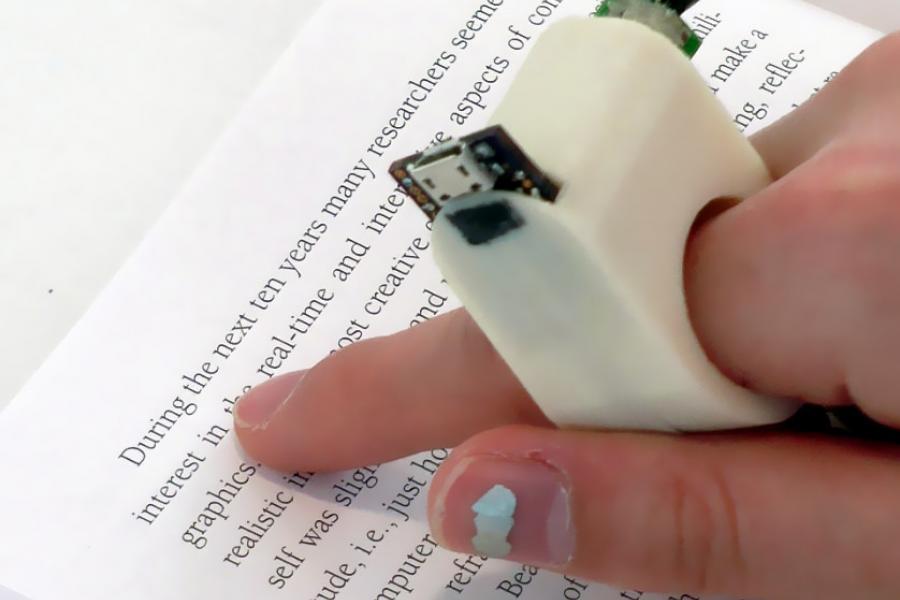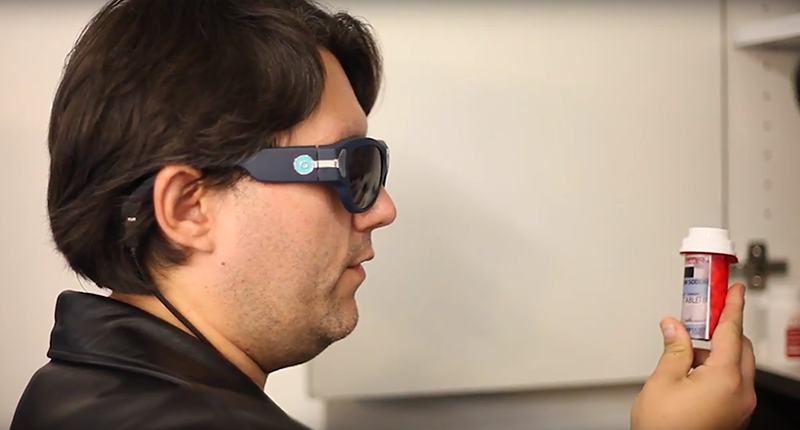Empowering Independence With Assistive Innovation for the Blind
The combination of assistive technology right into the lives of individuals with aesthetic impairments represents a significant innovation in advertising self-reliance and self-sufficiency. From cutting-edge display viewers to innovative smart canes, these tools not just improve daily navigation and communication but additionally encourage users to involve meaningfully in different aspects of life. As we check out the myriad benefits and real-world applications of these innovations, it comes to be essential to analyze the hidden factors that contribute to their efficiency and the potential for future advancements in this crucial field.
Summary of Assistive Technology

The development of assistive modern technology is grounded in principles of inclusivity and empowerment. Technologies in software application, equipment, and sensory improvements supply users with alternatives tailored to their certain requirements. From screen visitors that convert text to speech, to responsive gadgets that convey info with touch, these tools transform the way people involve with their surroundings.
Along with useful applications, assistive modern technology promotes greater social inclusion and participation in various fields, including education and employment (Screen readers for the blind). As r & d continue to advance, the possibility for assistive technology to further enhance the lives of visually damaged people remains appealing, paving the method for a much more fair society where everyone can flourish
Types of Assistive Instruments
A range of assistive gadgets have arised to support people with visual disabilities, each made to fulfill particular requirements and boost daily functioning. These devices vary from low-tech services to state-of-the-art technologies, giving diverse options for users.
Low-tech devices include magnifiers and large-print materials that aid in reading and writing. Braille devices, such as Braille slates and stylus pens, allow responsive reading and communication. Positioning and flexibility aids, like white walking canes, assist customers browse their environment securely.
On the greater end of the range, digital zoom systems and display viewers offer significant support. Digital magnifiers permit individuals to enlarge message and images on screens, while display viewers transform electronic web content right into synthesized speech, promoting accessibility to information on smartphones and computer systems.
Smartphone applications additionally play an important function, supplying features like message acknowledgment and navigating assistance. Wearable technology, such as wise glasses equipped with augmented truth, is arising as a promising device to improve situational recognition.
Benefits of Assistive Modern Technology
The combination of assistive innovation significantly enhances the lifestyle for individuals with visual disabilities. These modern technologies empower customers by advertising self-reliance, allowing them to navigate their settings better and perform daily tasks with greater ease. As an example, display visitors and magnifying software enable individuals to accessibility digital information, fostering expert and educational opportunities that might have previously run out reach.
In addition, assistive gadgets such as clever walking sticks and GPS applications offer real-time navigating assistance, boosting mobility and security. This raised freedom not only boosts self-confidence yet likewise motivates social interaction, permitting users to participate more fully in their areas.
Assistive innovation additionally promotes interaction, aiding customers get in touch with others with voice acknowledgment and text-to-speech applications. This capacity is important for preserving relationships and accessing crucial information.
Additionally, the personalization choices offered with lots of assistive technologies guarantee that customers can tailor devices to their particular requirements, even more boosting functionality and effectiveness. Overall, the benefits of assistive innovation for people with visual disabilities are profound, promoting a more inclusive society where everyone can pursue their goals and goals.
Instance Researches and Success Stories
Highlighting the transformative Look At This influence of assistive innovation, various case research studies illustrate how people with visual problems have effectively incorporated these devices right into their everyday lives. One engaging instance involves a college pupil who made use of display analysis software to browse scholastic materials and online sources efficiently. This modern technology not only facilitated her education and learning but additionally enhanced her self-confidence in taking part in conversations and group jobs.
An additional study features a specialist that uses a smartphone application designed for navigation and object recognition. By utilizing this application, he has actually regained freedom in both his individual and workplace, allowing him to commute separately and engage with colleagues extra effectively.
Furthermore, a senior citizen shared her experience with braille e-readers, which enabled her to access a huge array of literary works and stay attached with her community with publication clubs.
These success tales emphasize the critical role of assistive technology in promoting freedom, improving top quality of life, and promoting social integration for individuals with aesthetic problems (OCR devices for the blind). By accepting these cutting-edge devices, customers can get over difficulties and take possibilities that add to their personal and specialist fulfillment

Future Patterns in Assistive Technology
Innovation in assistive innovation is positioned to redefine the landscape of assistance for individuals with aesthetic impairments. Emerging trends emphasize the combination of artificial intelligence (AI) and artificial intelligence, which enhance the functionality of devices that help with navigation and information accessibility. For example, AI-driven applications are currently with the ability of analyzing visual information in real-time, allowing individuals to involve with their setting extra independently.
In addition, the content growth of wearable innovation is advancing rapidly. Smart glasses outfitted with enhanced fact (AR) can provide audio descriptions of environments, changing just how individuals engage with public spaces. These tools not just promote freedom yet also foster social addition.
Additionally, the Net of Things (IoT) is making homes smarter, enabling smooth connection in between assistive gadgets and daily devices. This connection encourages customers by enabling automatic actions and voice-activated controls tailored to individual requirements.
Conclusion
In conclusion, assistive modern technology plays a pivotal duty in empowering individuals with aesthetic impairments by boosting their independence and involvement with their environments. The varied variety of applications and devices available not just promotes navigating and communication yet likewise advertises social combination and opportunities for personal and specialist growth. As innovations continue in this area, the potential for boosting the top quality of life for those with visual disabilities will certainly increase, fostering higher autonomy and empowerment.
